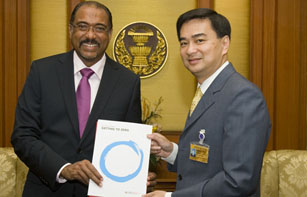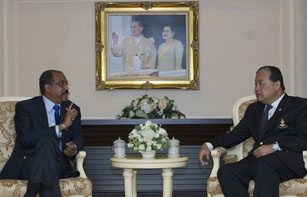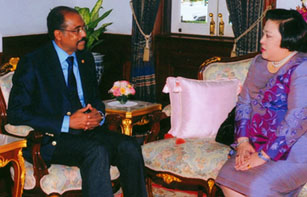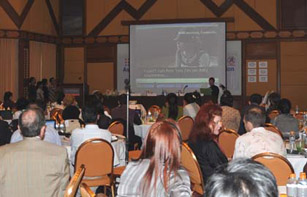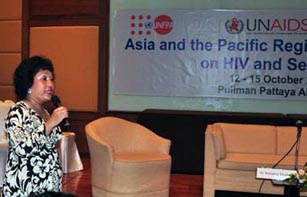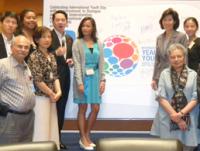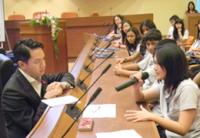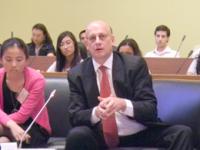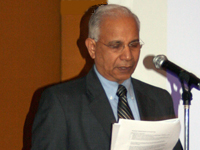Geneva, 24 September 2009 – The World Health Organization (WHO) and the Joint United Nations Programme on HIV/AIDS (UNAIDS) are optimistic about the results, announced today, of the largest ever HIV vaccine clinical trial held to date.
The study results, representing a significant scientific advance, are the first demonstration that a vaccine can prevent HIV infection in a general adult population and are of great importance.
The two UN agencies congratulate both the principal investigators, sponsors and the trial volunteers who have made this encouraging result possible.
The RV144 HIV vaccine study results, revealing a 31.2% vaccine efficacy in preventing HIV infections are characterized as modestly protective. However, these results have instilled new hope in the HIV vaccine research field and promise that a safe and highly effective HIV vaccine may become available for populations throughout the world who are most in need of such a vaccine. No vaccine safety issues were observed in the trial.
Much more work, though, has to be done by the principal investigators and a large group of international collaborators to analyse the trial data, understand the protective mechanism, determine the duration of protection, and map next steps. Licensure at this point in time may not be possible solely on the basis of this study's results, and it remains to be seen if the two specific vaccine components in this particular regimen would be applicable to other parts of the world with diverse host genetic backgrounds and different HIV subtypes driving different regional sub-epidemics. Once an HIV vaccine does become available, it will need to be universally accessible by all persons at risk.
In addition, early HIV vaccines with modest levels of efficacy would most likely have to be used as complementary tools in combination with strategies to promote changes in behavioural and social norms, promotion of correct and consistent condom use, access to safe injection equipment, as well as male circumcision.
The Phase III trial, involving 16 395 adult male and female volunteers in Thailand, was a test- of-concept of a novel HIV vaccine regimen with two different candidate vaccines developed by Sanofi-Pasteur and the non-profit organization Global Solutions for Infectious Diseases. The trial was performed by the Thai Ministry of Public Health, sponsored by the United States Army Surgeon General and received funding from the United States National Institute for Allergy and Infectious Diseases and the United States Army Medical Research and Materiel Command, Department of Defense.
WHO and UNAIDS began supportive work for this trial 18 years ago, in 1991, when Thailand was recommended as one of the WHO-sponsored countries in preparation for HIV vaccine trials and the development of the National AIDS Vaccine Plan. In particular, WHO and UNAIDS through their HIV Vaccine Advisory Committee (VAC) provided continuous technical guidance and advice for review, approval and implementation of the RV144 trial protocol. In 2006, VAC performed an external evaluation of the trial examining various ethical and community-related issues: this evaluation showed that the trial was being conducted at the highest scientific and ethical standards and with active community participation.
Moreover, WHO and UNAIDS, in collaboration with partners, such as the Global HIV Vaccine Enterprise have jointly developed numerous policy documents relating to access to care and treatment for trial participants, design and purpose of test of concept HIV vaccine trials as well as scientific parameters.
WHO and UNAIDS will work with the global HIV stakeholder community to further understand and resolve a range of questions related to the potential introduction of an HIV vaccine of moderate protective efficacy. This includes additional, in-depth trials in different populations with diverse host and virus genetic backgrounds.
Until a highly effective HIV vaccine becomes available UNAIDS and WHO underline the importance of effective and proven HIV prevention methods for all people. A comprehensive HIV prevention package includes, but is not limited to, behavioural interventions to reduce sexual risk practices, including correct and consistent male and female condom use, early and effective treatment for sexually transmitted infections, male circumcision in high HIV prevalence settings, harm reduction for injecting drug users, post-exposure prophylaxis with antiretroviral drugs, and interventions to prevent HIV transmission in health care settings.




